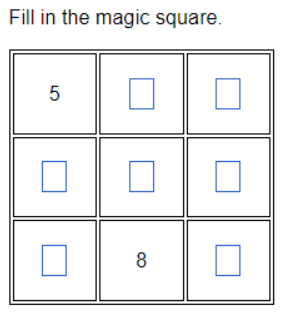Welcome to Week 1: Critical Thinking, Problem Solving, and Reasoning
Great Students,
Greetings to everyone.
Welcome to Module 1.
What is Critical Thinking?
Why is it important to everyone?
What is Problem Solving?
Why do you think it is important in Mathematics?
Why is teaching problem solving an important part of mathematics?
Describe George Polya's Four Step Problem Solving Process.
Describe the Understand-Solve-Explain approach to problem solving, giving examples of things that should be considered in each step.
What is Logic?
Explain how logic can be useful.
Logic is the study of the methods and principles of reasoning.
It can be useful in providing strong support for conclusions, and to help identify errors in reasoning, or fallacies.
What is Reasoning?
Use reasoning to solve this problem.
A magic square is a square array of numbers arranged so that the numbers in: all rows, all columns,
and the two diagonals have the same sum.
Find a 3-by-3 magic square using the numbers 2, 5, 8, 12, 15, 18, 22, 25, and 28.

Welcome to Critical Thinking, Problem Solving, and Reasoning.
May you please:
(1.) Click the Week 1 module.
(2.) Review the Overview and Objectives.
(3.) Review the Readings/Assessments.
(4.) Complete the assessments initially due this week.
(5.) Participate in the Week 1 Discussion.
(6.) Attend the Live Sessions/Student Engagement Hours for this week.
Should you have any questions, please ask. I am here to help.
Thank you.
Samuel Chukwuemeka
Working together for success
